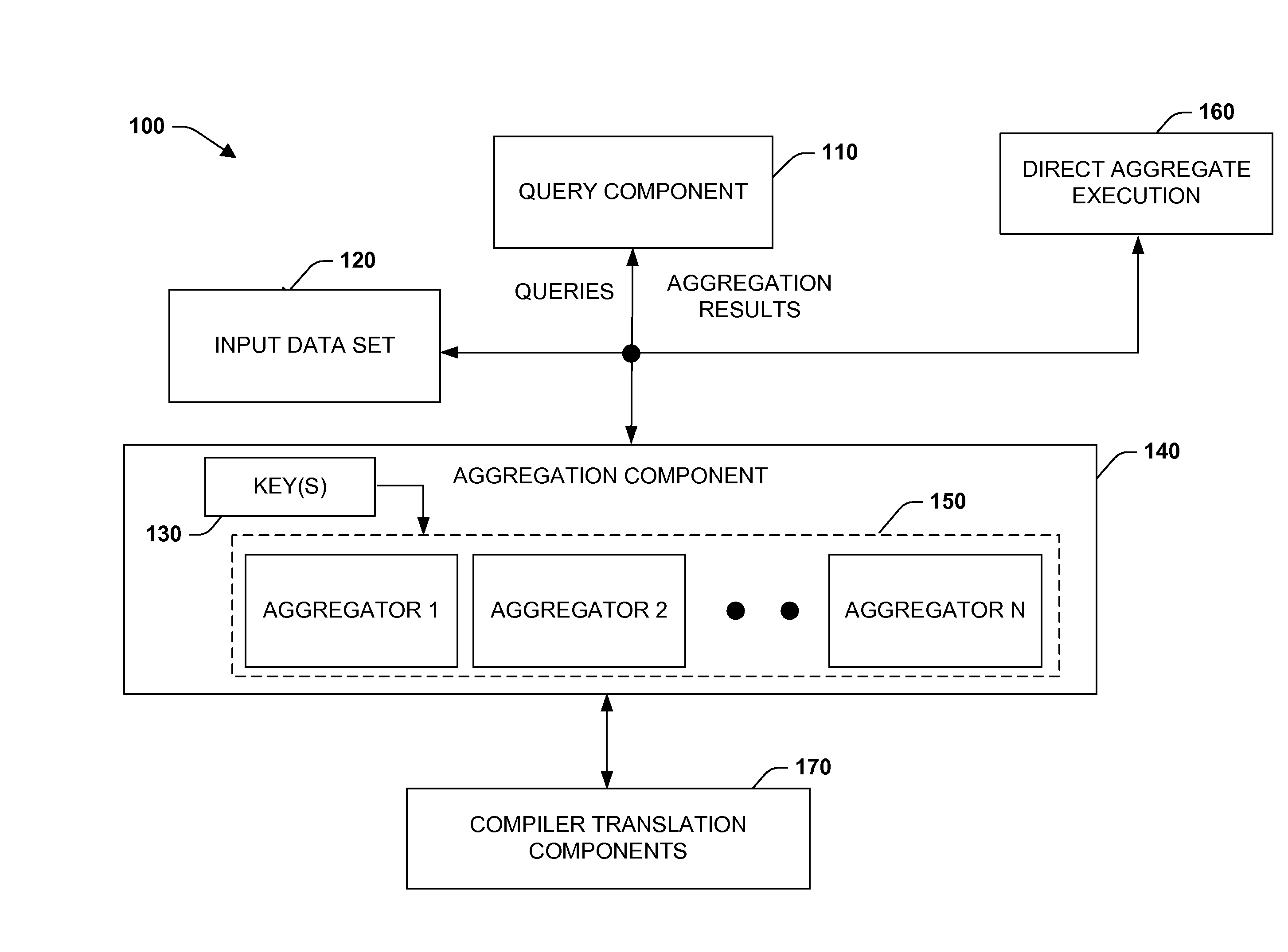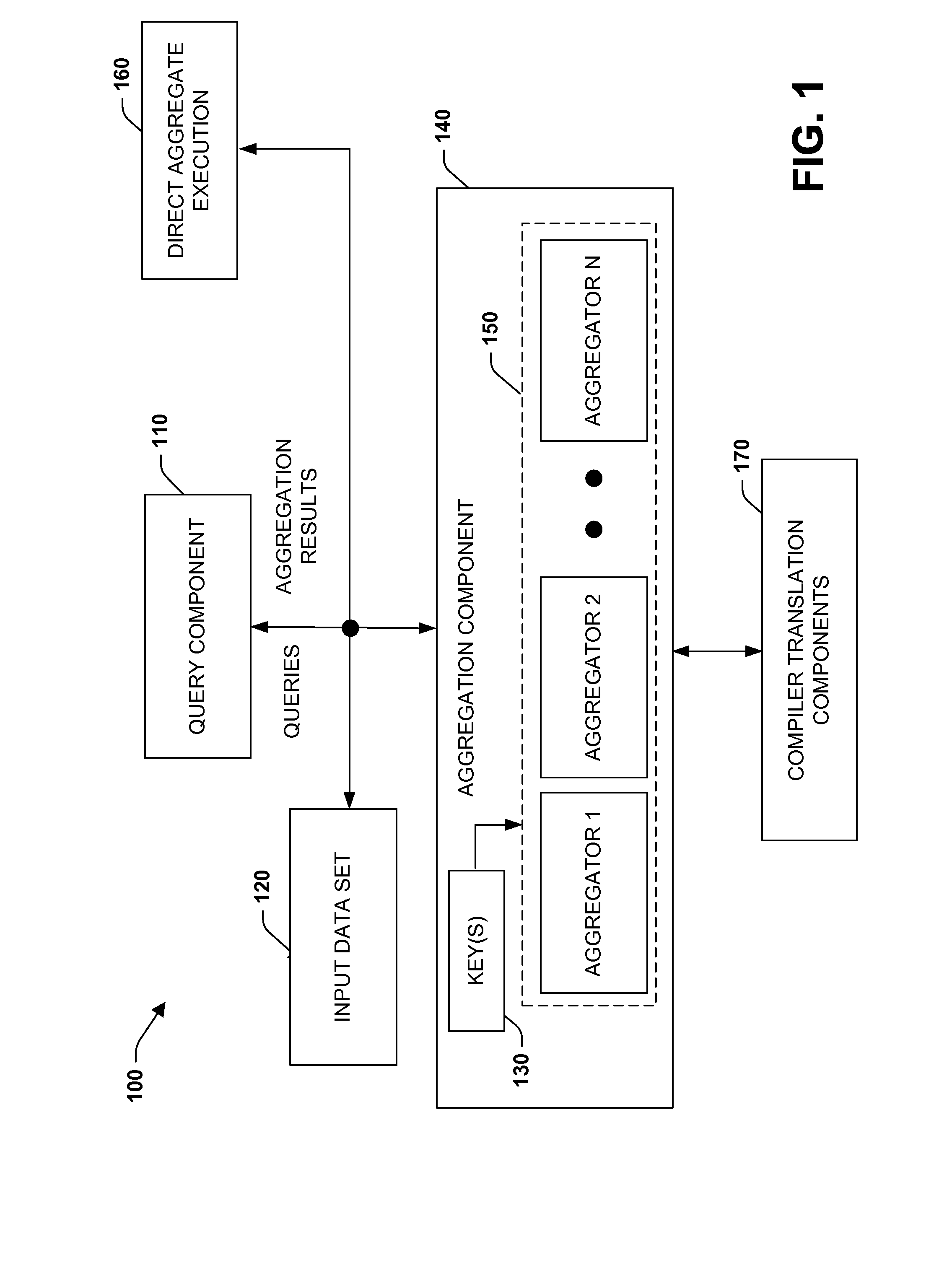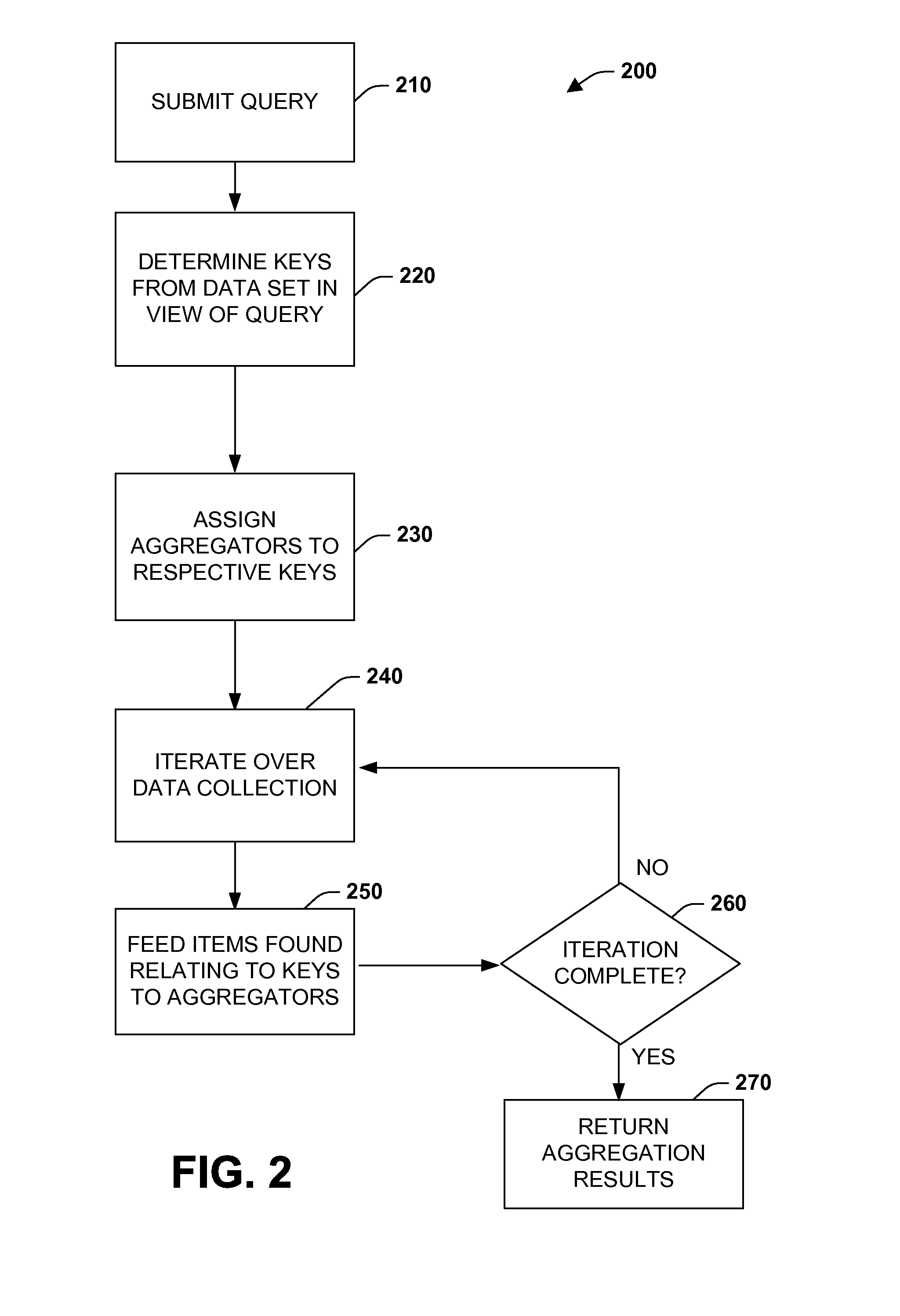Efficient execution of aggregation queries
a technology of aggregation and execution, applied in the field of efficient execution of aggregation queries, can solve the problems of complexity, difficulty in correct computation of aggregates, and difficult implementation, and achieve the effects of facilitating direct aggregate computation, improving processing performance, and enhancing aggregation computation performan
- Summary
- Abstract
- Description
- Claims
- Application Information
AI Technical Summary
Benefits of technology
Problems solved by technology
Method used
Image
Examples
Embodiment Construction
[0021]A query language and aggregations system is provided where processing performance is enhanced by performing direct aggregate computations as opposed to conventional multistage grouping and aggregate processing. A query language system is provided that includes a query component that specifies operations for one or more items in a data set. An aggregator component identifies one or more keys associated with the data set, the keys are supplied to one or more aggregators that perform direct computations from the keys in order to determine at least one aggregated value for the data set.
[0022]As used in this application, the terms “component,”“query,”“aggregator,” and the like are intended to refer to a computer-related entity, either hardware, a combination of hardware and software, software, or software in execution. For example, a component may be, but is not limited to being, a process running on a processor, a processor, an object, an executable, a thread of execution, a progr...
PUM
 Login to View More
Login to View More Abstract
Description
Claims
Application Information
 Login to View More
Login to View More - R&D
- Intellectual Property
- Life Sciences
- Materials
- Tech Scout
- Unparalleled Data Quality
- Higher Quality Content
- 60% Fewer Hallucinations
Browse by: Latest US Patents, China's latest patents, Technical Efficacy Thesaurus, Application Domain, Technology Topic, Popular Technical Reports.
© 2025 PatSnap. All rights reserved.Legal|Privacy policy|Modern Slavery Act Transparency Statement|Sitemap|About US| Contact US: help@patsnap.com



